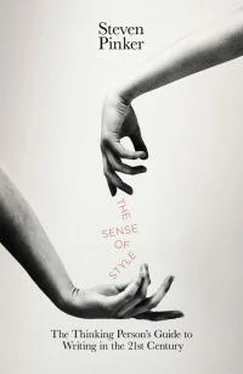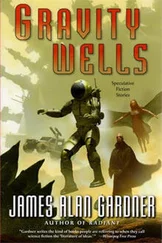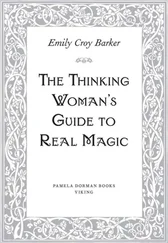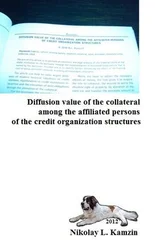Existential:
A curse was on the kingdom.
There was a curse on the kingdom.
Clause as subject:
Extraposed clause:
That Oedipus would learn the truth was inevitable.
It was inevitable that Oedipus would learn the truth.
Basic construction:
Cleft:
Oedipus killed Laius.
It was Oedipus who killed Laius.
It was Laius whom Oedipus killed.
Basic construction:
Pseudo-cleft:
Oedipus killed Laius.
What Oedipus did was kill Laius.
The versions on the right are a bit longer, wordier, or more formal than the ones on the left, and the last four, with their needless words ( there, it, what ), are often good candidates for replacement by their snappier near-synonyms. But by now you can see why they’re sometimes useful: they give the writer additional freedom in ordering phrases in the tree.
Preposing allows the writer to move a modifying phrase leftward, which can separate it from a pesky little phrase to which it might otherwise attach itself (as with the young man who had involuntary seminal emissions if he engaged in foreplay for several weeks). The next four constructions allow a writer to shift a phrase rightward when it is too heavy or too newsworthy to be taking up space in the middle of a sentence. The last two allow a writer an additional lever of control over what the reader will treat as given and what she will treat as new. The cleft inverts the usual ordering: the new information is thrust into the spotlight early, and the given information, which serves as its background, comes at the end. The pseudo-cleft retains the usual order (given-to-new), but both kinds of clefting add an important twist: the given information is not old news, in the sense of having been mentioned earlier in the discussion, but presupposed: the reader is asked to accept it as true, and is now being informed what it is true of. It was Oedipus who killed Laius, for example, takes it for granted that someone killed Laius, the only question being who; the main clause of the sentence informs us who the who is.
Another major resource that English puts at a writer’s disposal is the choice of verb. Some verbs have a counterpart which narrates the same scenario but fills its grammatical slots (subject, object, oblique object) with different role-players (the mover, the thing moved, the source, or the recipient):
Jocasta gave the infant to her servant.
The servant received the infant from Jocasta.
She robbed her uncle of a cigar.
She stole a cigar from her uncle.
Morris sold a watch to Zak.
Zak bought a watch from Morris.
I substituted margarine for the lard.
I replaced the lard with margarine.
The vandals fled the police.
The police chased the vandals.
The goalie sustained an injury from the onrushing forward.
The onrushing forward inflicted an injury on the goalie.
Like the menu of constructions, the menu of verbs can give a writer several options on where to place a given, new, light, or heavy phrase. Holding the crime constant, the verb rob places the ill-gotten gains at the end ( She robbed her uncle of an expensive hand-rolled Cuban cigar ); the verb steal places the victim at the end ( She stole a cigar from her greedy lascivious uncle ).
Good writers may have no explicit awareness of how these constructions and verb types work, and they certainly don’t know their names. The words and structures lie waiting in memory, bearing little tags like “here’s a way to delay mentioning a modifier” or “my direct object is the thing being transferred.” Accomplished wordsmiths identify a need while writing, or spot a problem in a sentence while revising, and when all goes well the suitable word or construction pops into mind.
Just below the surface of these inchoate intuitions, I believe, is a tacit awareness that the writer’s goal is to encode a web of ideas into a string of words using a tree of phrases. Aspiring wordsmiths would do well to cultivate this awareness. It can help rid their writing of errors, dead ends, and confusing passages. And it can take the fear and boredom out of grammar, because it’s always more inviting to master a system when you have a clear idea of what it is designed to accomplish.

Chapter 5
Arcs of Coherence
HOW TO ENSURE THAT READERS WILL GRASP THE TOPIC, GET THE POINT, KEEP TRACK OF THE PLAYERS, AND SEE HOW ONE IDEA FOLLOWS FROM ANOTHER
So many things can go wrong in a passage of prose. The writing can be bloated, self-conscious, academic; these are habits that classic style, which treats prose as a window onto the world, is designed to break. The passage can be cryptic, abstruse, arcane; these are symptoms of the curse of knowledge. The syntax can be defective, convoluted, ambiguous; these are flaws that can be prevented by an awareness of the treelike nature of a sentence.
This chapter is about yet another thing that can go wrong in writing. Even if every sentence in a text is crisp, lucid, and well formed, a succession of them can feel choppy, disjointed, unfocused—in a word, incoherent. Consider this passage:
The northern United States and Canada are places where herons live and breed. Spending the winter here has its advantages. Great Blue Herons live and breed in most of the northern United States. It’s an advantage for herons to avoid the dangers of migration. Herons head south when the cold weather arrives. The earliest herons to arrive on the breeding grounds have an advantage. The winters are relatively mild in Cape Cod.
The individual sentences are clear enough, and they obviously pertain to a single topic. But the passage is incomprehensible. By the second sentence we’re wondering about where here is. The third has us puzzling over whether great blue herons differ from herons in general, and if they do, whether these herons live only in the northern United States, unlike the other herons, who live in Canada as well. The fourth sentence seems to come out of the blue, and the fifth seems to contradict the fourth. The paragraph is then rounded out with two non sequiturs.
Now, I doctored this passage to make it bewilderingly incoherent, just to dramatize the topic of this chapter. But lesser failures of coherence are among the commonest flaws in writing. Consider some of the clumsy sentences I fixed in earlier chapters, repeated here in their improved versions:
The researchers found that in groups with little alcoholism, such as Jews, people actually drink moderate amounts of alcohol, but few of them drink too much and become alcoholics.
For the third time in a decade, a third-rate Serbian military is brutally targeting civilians, but beating it is hardly worth the effort; this view is not based on a lack of understanding of what is occurring on the ground.
Even with the syntax repaired, the sentences are difficult to understand, and the original contexts don’t make them any clearer. The problem is coherence: we don’t know why one clause follows another. No further tinkering with the syntax will help. We need a context that leads the reader to understand why the writer felt the need to assert what she is now asserting:
One might think that the reason some ethnic groups have high rates of alcoholism is that drinking is common in the group. According to this hypothesis, drinking even moderate amounts of alcohol puts people at risk of drinking too much and becoming alcoholics. If so, we should find that the groups with the lowest rates of alcoholism are those in which drinking of any kind is forbidden, such as Mormons or Muslims. But that’s not what the researchers discovered. …
Читать дальше













